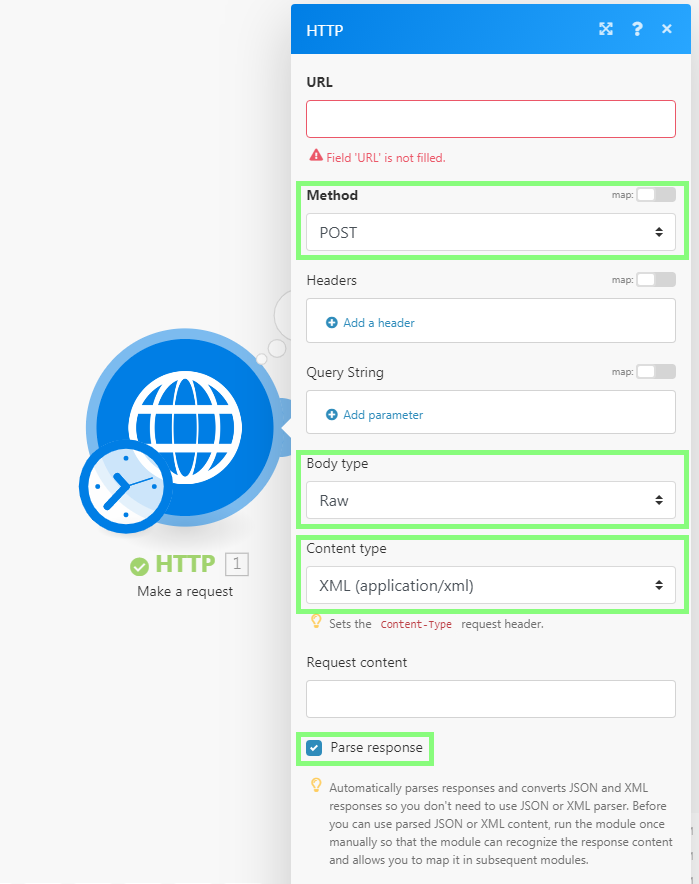| Active |
|---|
| This application does not need additional settings. So you can make connectionUnique, active service acces point to a network. There are different types of connections (API key, Oauth…). More only by using your login credentials or by following the instructions below . |
The SOAP moduleThe module is an application or tool within the Boost.space system. The entire system is built on this concept of modularity. (module - Contacts) More is currently in beta and does NOT support:
-
Custom XML Schema elements are defined with the help of SOAP Encoding (http://schemas.xmlsoap.org) schemas and elements. For example, the following would not be recognized correctly by Boost.spaceCentralization and synchronization platform, where you can organize and manage your data. More IntegratorPart of the Boost.space system, where you can create your connections and automate your processes. More:
<complexType name="ArrayOfFloat"> <complexContent> <restriction base="soapenc:Array"> <attribute ref="soapenc:arrayType" wsdl:arrayType="xsd:integer[]"/> </restriction> </complexContent> </complexType>
It includes the
soapenc:Array,soapenc:arrayTypeandwsdl:arrayTypereferences, which are not yet supported in Boost.space Integrator. -
Redefine elements
-
Fraction digits restrictions
-
Total digits restrictions
-
White spaceSubunits are created within modules to maintain organization and clarity, even with large amounts of data. More restrictions
-
Multiple parts in input and output messages. Only single-part messages are supported
If the SOAP module refuses to process the WSDL file or throws various errorsService is unavailable due to a failure, a service responds with unexpected data or the validation of input data fails. More in the module’s configuration, you may try using the universal HTTP > Make a request module instead:
-
In Boost.space Integrator, create a new scenarioA specific connection between applications in which data can be transferred. Two types of scenarios: active/inactive. More.
-
Insert the HTTP > Make a request module in the scenario.
-
Open the module’s configuration and configure it like shown below:

-
Open a new web browser window/tab.
-
Paste the WSDL URL into the web browser’s address bar and fetch the XML file. The WSDL URL usually ends with
?wsdl, but not necessarily, e.g. http://voip.ms/api/v1/server.wsdl -
If the WSDL file does not display directly in the web browser, open the downloaded file in a text editor.
-
Search for the
<service>or<wsdl:service>tag:
-
Once located, copy the URL from the
locationattribute. -
In Boost.space Integrator, paste the URL into the HTTP module’s URL field.
-
Open the Online SOAP Client in a new web browser window/tab.
-
Paste the WSDL URL into the WSDL URL field.
-
Click on the Browse button.
-
Pick from the list of functionsFunctions you can use in Boost.space Integrator - create, update, delete, get, search. to the left, e.g.
getLanguages. -
Copy the content of the Request XML text area.
-
In Boost.space Integrator, paste the copied content to the module’s Request content field.
-
Provide values for selected parameters by replacing the question marks with actual values:

-
Close the module’s configuration by clicking on the OK button.
-
Execute the scenario/module.
